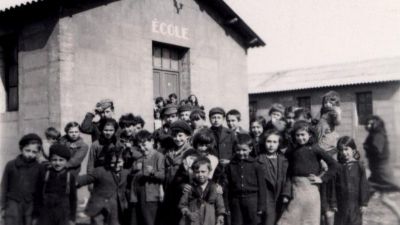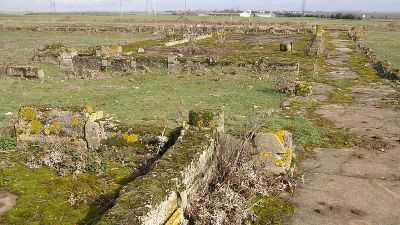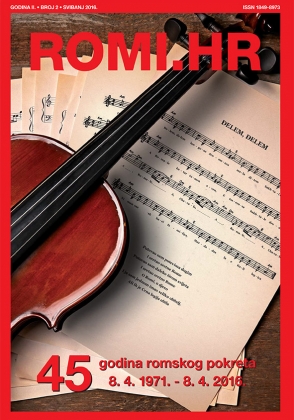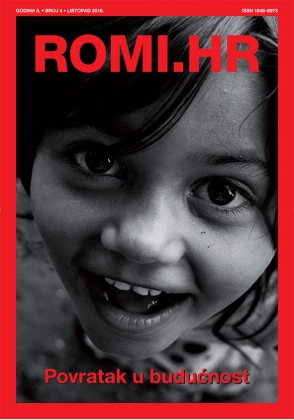Fokus ROMI.HR
/Montreuil-Bellay je gradić u regiji Pays de la Loire na zapadu Francuske. Izgledajući malo i bezazleno, ne biste lako pogodili da se od studenoga 1941. do siječnja 1945. godine tu nalazio najveći francuski koncentracijski logor za Rome, Sinte i druge skupine ljudi koji su živjeli nomadskim načinom života, i u kojem je bilo zatvoreno na tisuće ljudi.
Prijevod: Zvonimir Rajković
Ciljani zatvorenici za ovaj kamp bili su „beskućnici, nomadski i sajamski pojedinci, romskog tipa“. Razlog tome bio je dekret donesen 6. travnja 1940. godine kojim je ljudima koji su živjeli nomadskim načinom života, budući da se sumnjalo da su ili bi lako mogli postati špijuni, zabranjeno kretanje francuskim područjem.
Možemo citirati izvještaj napisan za tadašnjeg predsjednika Francuske, Alberta Lebruna:
„Les inscessants déplacements des nomades leur permettent de surprendre des mouvements de trupes, des stationnements d'unités, des emplacements de dispositifs of défense, renseignements importants qu'ils sont suceptibles de communiquer à des agents ennemis“.
„Neprestana kretanja nomada omogućavaju im promatranje kretanja trupa, vojnih postrojbi i lokacija obrambenih uređaja – važne informacije koje će vjerojatno prenijeti neprijateljskim agentima“.
Nakon ove odluke su se trebali prijaviti najbližoj policijskoj brigadi koja bi im tada „negdje odredila prebivalište“, a to je bio Montreuil-Bellayu.
Osim toga, nacistička naredba, donesena 22. studenoga 1940. godine proglasila je bavljenje 'mobilnim zanimanjima' ilegalnim u većini okupirane Francuske, što je snažno negativno utjecalo na Rome, Sinte i druge ljudima koji su živjeli nomadskim načinom života.
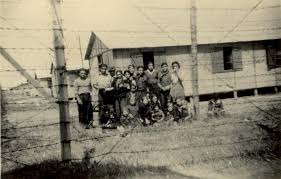
Montreuil-Bellay se tada nazivao 'internacijskim' logorom, što je bilo slično nacističkim koncentracijskim logorima. Razlika je bila u tome što zatvorenici nisu deportirani u Njemačku, već su držani na ovom prostoru. Logor je izvorno bilo mjesto za pohranu eksplozivnog baruta zbog sigurnosti, a u lipnju 1940. godine Višijski Režim pretvara ga u koncentracijski logor. Za razliku od nekih drugih mjesta poput radnih logora, zatvorenici u ovom koncentracijskiom logoru nisu dobivali nikakve posebne zadatke, već su bili zatočeni iza bodljikave žice.
Osim što je, zbog nedostatka hrane i vrlo loših higijenskih uvjeta, zatočeništvo je bilo fizički teško, a bilo je i psihički vrlo teško, jer mnogi zatvorenici nisu razumjeli zbog čega su tamo zatvoreni.
Otprilike stotinu ljudi je umrlo tijekom tri i pol godine postojanja ovog kampa. Uglavnom su to bili starci i bebe, koji su bili slabiji od ostalih zatočenika.
Montreuil-Bellay je zatvoren 16. siječnja 1945. godine, četiri mjeseca nakon što je grad oslobođen. Tada je u logoru bilo 498 zatvorenika. Ipak, nisu izravno pušteni na slobodu već su prebačeni u logore Jargeau i Allier, a oslobođeni su tek u ožujku 1946. godine. Nakon premještanja zatvorenika u ove druge logore, Montreuil-Bellay je bio korišten za držanje njemačkih zatvorenika.

Nakon što su ga prestali koristiti, kamp je dugo bio prepušten sam sebi, postupno se pretvarajući u ruševine. Mnogi ljudi, čak i neki koji žive u Montreuil-Bellayu, nisu znali niti da postoji. S druge strane, posebno se ističe lokalni učitelj i povjesničar Jacques Sigot, koji je mnoge godine svog života posvetio prikupljanju podataka te nastojanjima da kamp učini poznatim široj javnosti.
Kao rezultat njegovog djelovanja, u srpnju 2010. godine, ruševine kampa klasificirane su kao povijesni spomenik, da bi zatim postale mjesto sjećanja. Dana 29. listopada 2016. godine, na ovom je mjestu održana nacionalna memorijalna svečanost povodnom obilježavanja 70 godina od zatvaranja posljednjih sabirnih logora za ljudi koji su živjeli nomadskim načinom života. Tadašnji predsjednik Francuske, François Hollande, prisustvovao je svečanosti i ovom je prigodom formalno priznao odgovornost Francuske za 'internaciju' Roma, Sinta i drugih skupina ljudi koji su živjeli nomadskim načinom života tijekom Drugog svjetskog rata u Francuskoj.
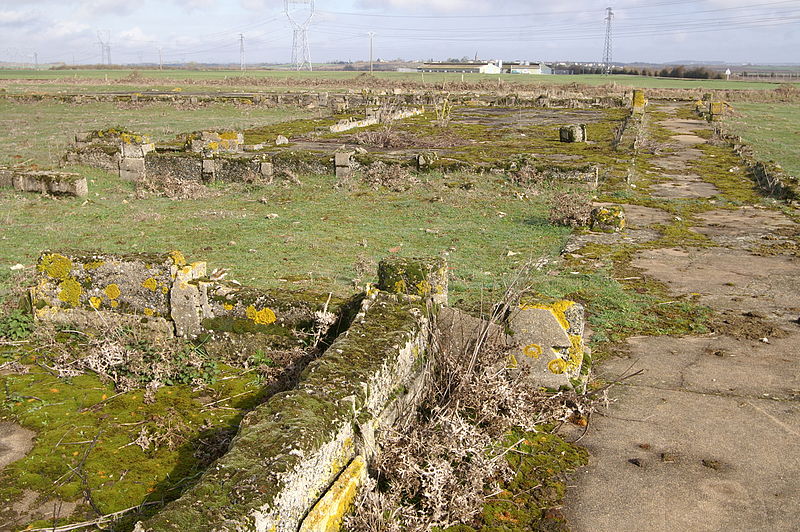
Montreuil-Bellay is a small town in the Pays de la Loire region in the West of France. A small and unsuspecting place, you would struggle to guess that from November 1941 to January 1945, France's largest internment camp for Roma, Sinti, and other nomadic people was once here, in which many thousands of people were held, prisoner.
The targeted prisoners for this camp were „homeless, nomadic and fairground individuals, of the Romani type“. The reason behind this was a decree passed on the 6th April 1940 which banned nomadic people from circulating on the French territory, suspecting that they were or could easily become spies.
We can quote a report made for the then president of France, Albert Lebrun:
„Les incessants déplacements des nomades leur permettent de surprendre des mouvements de troupes, des stationnements d'unités, des emplacements de dispositifs de défense, renseignements importants qu'ils sont suceptibles de communiquer à des agents ennemis“.
„The incessant movements of the nomads means they may observe troop movements, unit stations and he location of defence devices – important information that they are likely to communicate to enemy agents“.
Following this decision, they needed to declare themselves to the nearest police brigade who would then „assign them residence somewhere“– this was the case in Montreuil – Bellay.
Furthermore, a Nazi order passed on the 22nd November 1940 made exercising a mobile profession illegal on most of occupied France, therefore strongly impacting Roma, Sinti, and other nomadic populations.
Montreuil Bellay was referred to as an ‘internment’ camp, which is similar to a nazi concentrations camps. This means that the prisoners were held there, and not deported to Germany. The camp was originally a gunpowder magazine, which is a place used to store explosive gunpowder for safety. It was then transformed into an internment camp in June 1940 by the Vichy Regime of France. Unlike some other places such as work camps, prisoners in this ‘internment’ camp weren't given any specific tasks to do, they were held prisoner behind the barbed wire.
As well as being very physically challenging, with a lack of food and very bad hygiene, the imprisonment was also psychologically very difficult, as many prisoners didn't understand why they were being held there.
Approximately a hundred people died during the camp's tree and a half years of functioning, these were mostly old people and babies, who were more fragile than their adult counterparts.
Montreuil Bellay was evacuated on January 16th, 1945, four months after the town was freed. At the time there were 498 prisoners in the camp. They weren't however directly set free; they were transferred to the Jargeau and Allier camps and freed in March 1946. After the prisoners were transferred to these other camps, Montreuil-Bellay was used to hold German prisoners.
Once it was no longer in use, the camp was long left to its own devices, gradually becoming ruins. Many people, even some living in Montreuil-Bellay, didn’t even know of its existence. Most notably, a local teacher and historian Jacques Sigot dedicated many years of his life to archiving and making the camp known to the general public.

As a result of this, in July 2010, the ruins of the camp were classed as a historical monument, in order to make them a place of memory. On the 29th of October 2016, a national memorial ceremony commemorating 70 years since the closing of the last internment camps for nomadic people was held at the site in Montreuil-Bellay. Then-president of France, François Hollande, attended the ceremony and on this occasion, he formally recognized France's responsibility in the internment of Roma, Sinti, and other nomadic people during World War 2 in France.
Galerija slika:
 Povratak na Fokus
Povratak na Fokus


